Setting clear and measurable goals is essential for business success—but without a structured approach, teams can struggle with alignment, prioritization, and accountability. That’s where the best OKR management tool can make a real difference. It acts like a strategic compass, helping organizations break down ambitious objectives into focused, actionable key results.
Objectives and Key Results, really help clarify individual roles and make sure everyone’s efforts are in sync with the broader company goals. When you have the right OKR tool, teams can stay open, accountable, and motivated. When implemented correctly, OKRs do more than just provide direction; they spark innovation and foster a cohesive, high-performing culture.
That’s where the right tool becomes crucial. Sure, you can get by with spreadsheets and manual tracking for a bit, but that approach can really hold you back. That’s why having dedicated OKR software is so important—it keeps everything organized, aligned, and transparent, making it much easier for your organization to achieve its goals.
As we look ahead to 2025, it’s clear that the expectations for OKR tools are changing fast. More and more organizations are realizing they need sophisticated solutions that do more than just facilitate goal-setting—they also enhance employee engagement and performance management. So, let’s dive into the top fifteen features that will make the best OKR management tools stand out in 2025!
Unlock Success in 2025: Essential Features of OKR Management Tools
User-Friendly Interface

A user-friendly interface is paramount for widespread adoption of any software tool. The complexity of navigating a cumbersome platform can deter employees from engaging with it regularly, undermining the very purpose of implementing an OKR system.
Key Elements:
Intuitive Navigation: A well-designed interface allows users to find what they need quickly without unnecessary clicks or confusion.
Visual Appeal: Modern designs with appealing aesthetics can enhance user experience and encourage more frequent use.
Mobile Compatibility: As remote work becomes the norm, having a mobile-friendly interface ensures that users can access their OKRs anytime, anywhere.
Actionable Insights and Dashboards
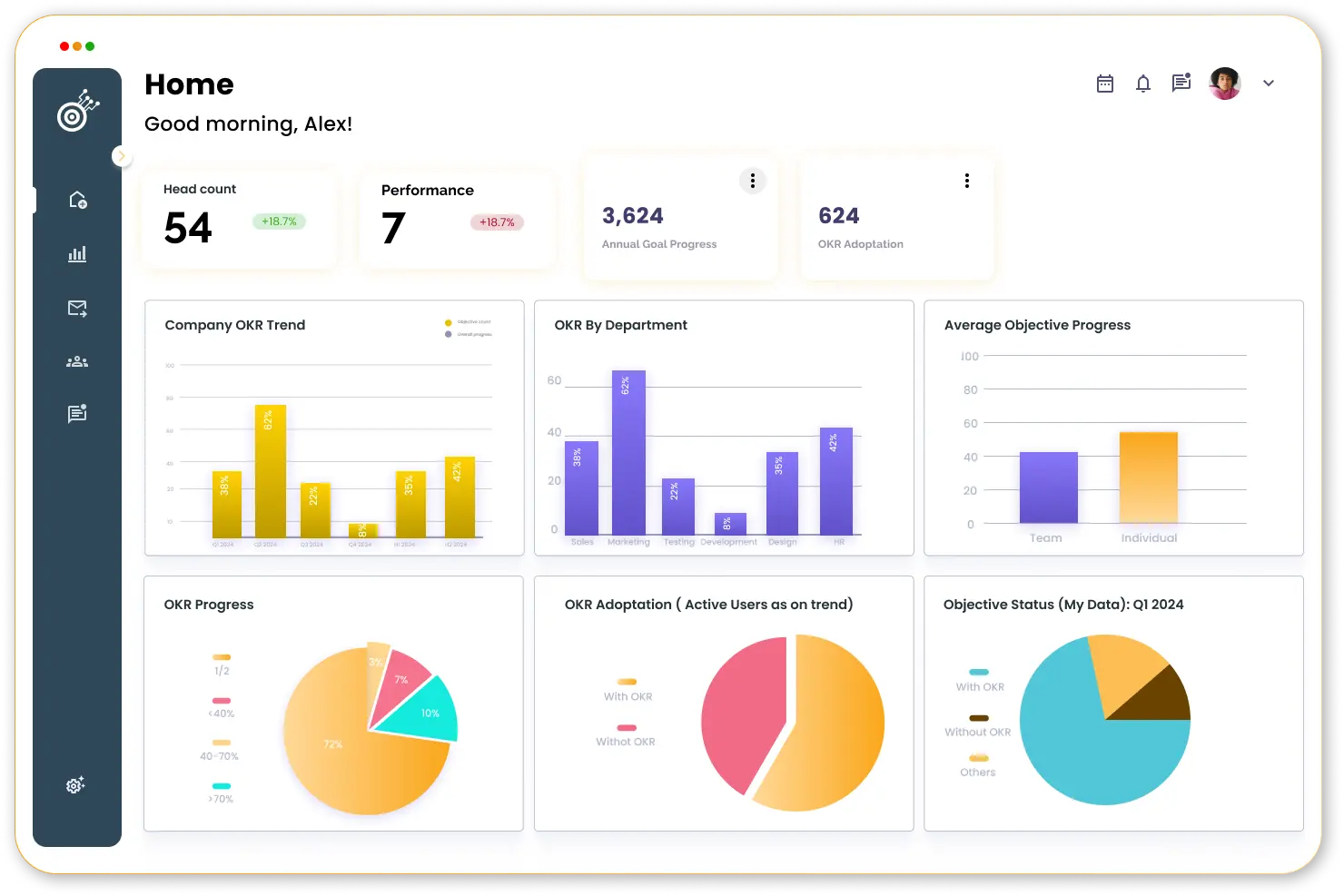
In today’s fast-paced business environment, data-driven decision-making is essential. Effective OKR tools provide real-time dashboards that track progress at multiple levels—individual, team, and organizational.
Key Features:
Customizable Reports: Users should be able to tailor reports to focus on specific metrics that matter most to their role or department.
Visual Data Representation: Charts, graphs, and heat maps make complex data easier to digest and interpret.
Progress Tracking: Real-time updates on progress towards key results help teams stay focused on their objectives.
Employee Engagement Tools
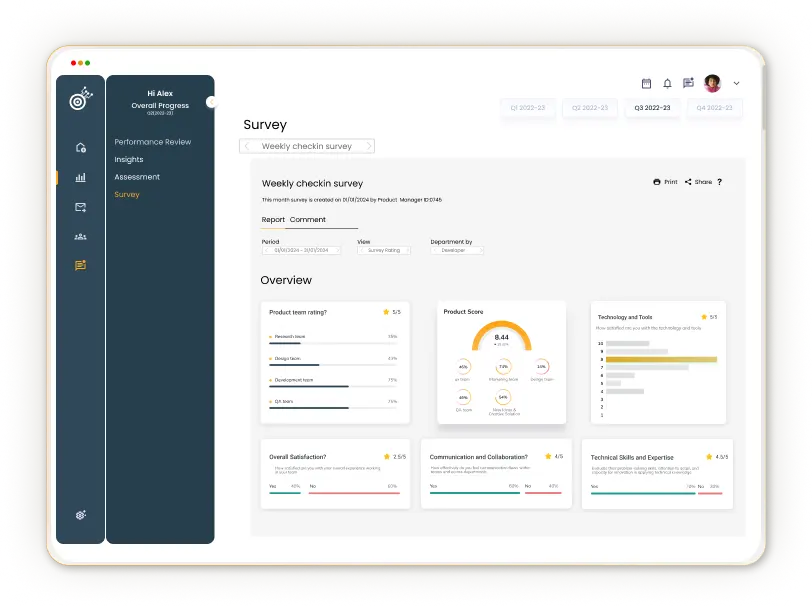
Employee engagement is critical for achieving organizational goals. OKR software should include features that promote collaboration and accountability among team members.
Key Features:
Multi-Directional Feedback Systems: Allow employees to give and receive feedback in real-time, fostering a culture of open communication.
Recognition Features: Integrated systems for recognizing employee achievements can boost morale and motivation.
1:1 Meeting Tools: Scheduling tools for regular check-ins between managers and team members help maintain alignment on objectives.
Alignment and Cascading Objectives
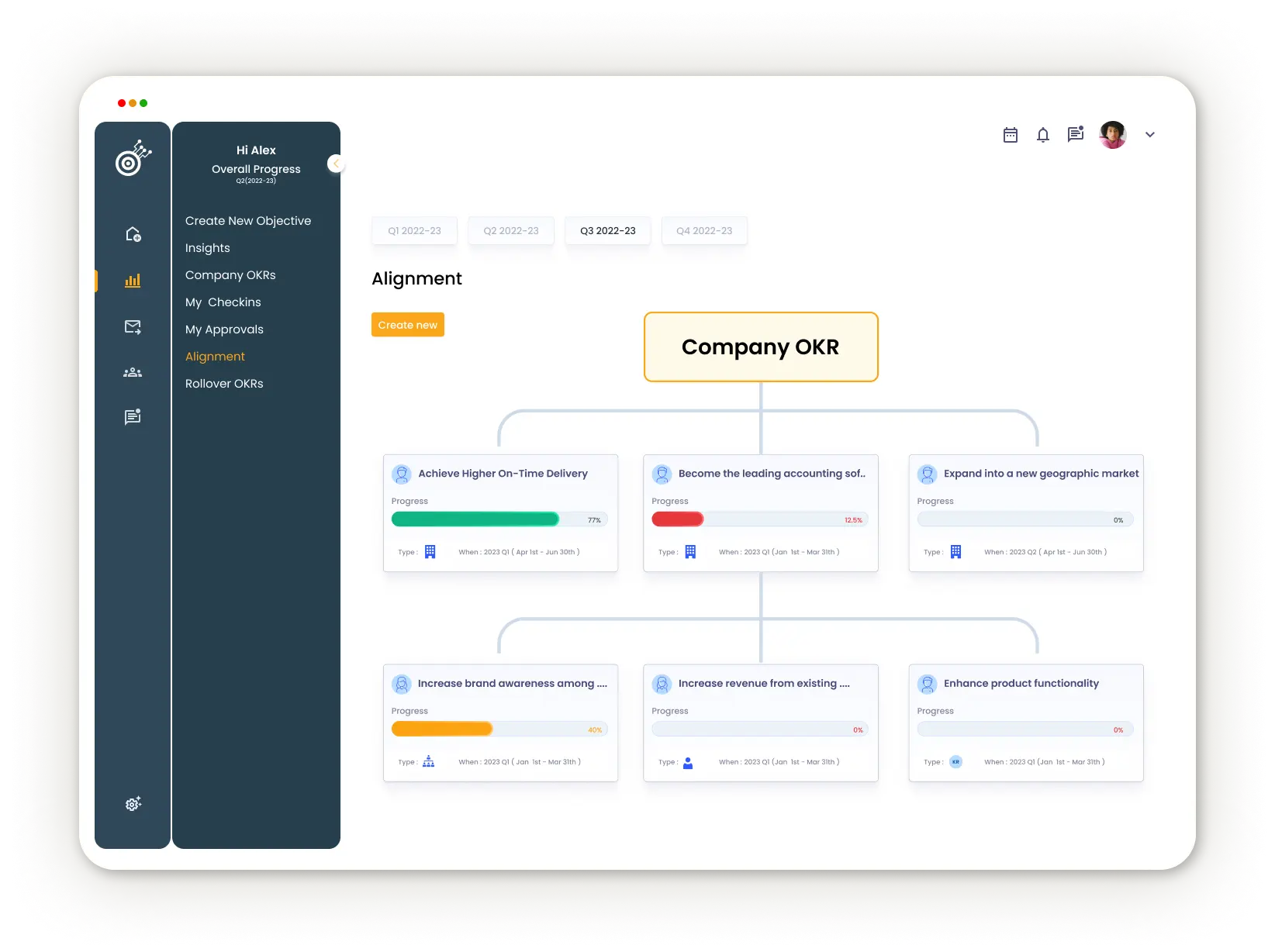
Alignment across departments is crucial for the success of any OKR initiative. When everyone understands how their goals contribute to larger organizational objectives, it fosters a sense of purpose.
Key Features:
Cascading Goals: The ability to easily cascade objectives from top-level management down to individual contributors ensures everyone is working towards the same end.
Visibility Across Teams: A bird’s-eye view of all objectives allows teams to see how their work interrelates with others.
Bottom-Up Input: Encouraging teams to set their own aligned objectives promotes autonomy while ensuring alignment with organizational goals.
Enhanced Transparency
Transparency is a core principle of effective OKRs. When everyone knows what others are working on, it fosters trust within teams and encourages collaboration.
Key Features:
Open Communication Channels: Tools should facilitate discussions around objectives and key results openly across departments.
Visibility into Responsibilities: Clear visibility into who is responsible for what helps hold individuals accountable for their contributions.
Progress Updates: Regular updates on progress towards goals should be easily accessible to all stakeholders.
Real-Time Feedback and Recognition

Timely feedback significantly enhances team performance. OKR software should incorporate features that allow for instant feedback between team members and managers.
Key Features:
Instant Feedback Mechanisms: Built-in features that enable quick feedback loops encourage continuous improvement.
Recognition Systems: Celebrating achievements in real-time boosts morale and reinforces desired behaviors.
CFRs (Conversations, Feedback, Recognition): Integrating these elements into daily workflows creates a culture of ongoing dialogue about performance.
OKR Retrospectives
Continuous learning is essential for refining the OKR process over time. Retrospectives allow teams to reflect on what worked well and what didn’t during each cycle.
Key Features:
Integrated Retrospective Tools: Allow teams to document achievements and challenges easily after each quarter.
Actionable Insights from Retrospectives: Gathering insights from past cycles can inform future goal-setting processes.
Facilitated Discussions: Tools should support structured discussions around retrospectives to ensure valuable lessons are captured.
Integrated Performance Management
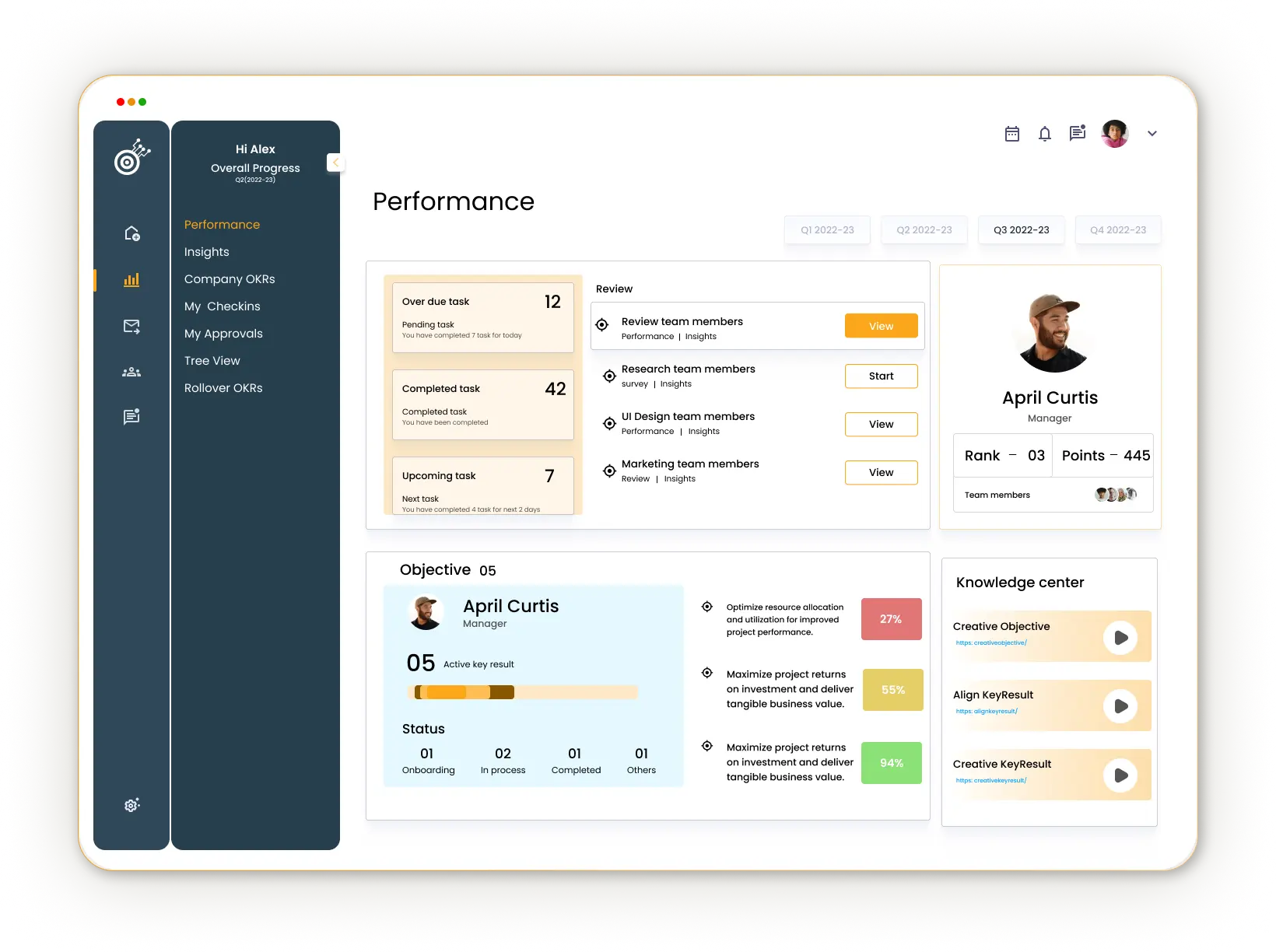
As organizations increasingly move away from traditional annual performance reviews, integrating continuous performance management into OKR tools becomes essential.
Key Features:
Ongoing Performance Conversations: Tools should facilitate regular dialogues between managers and team members about performance relative to OKRs.
Alignment with Business Goals: Continuous performance management ensures that individual performance remains aligned with evolving business objectives.
Skill Development Tracking: Monitoring skill development alongside goal achievement helps organizations invest in employee growth effectively.
Automated Follow-Ups and Notifications
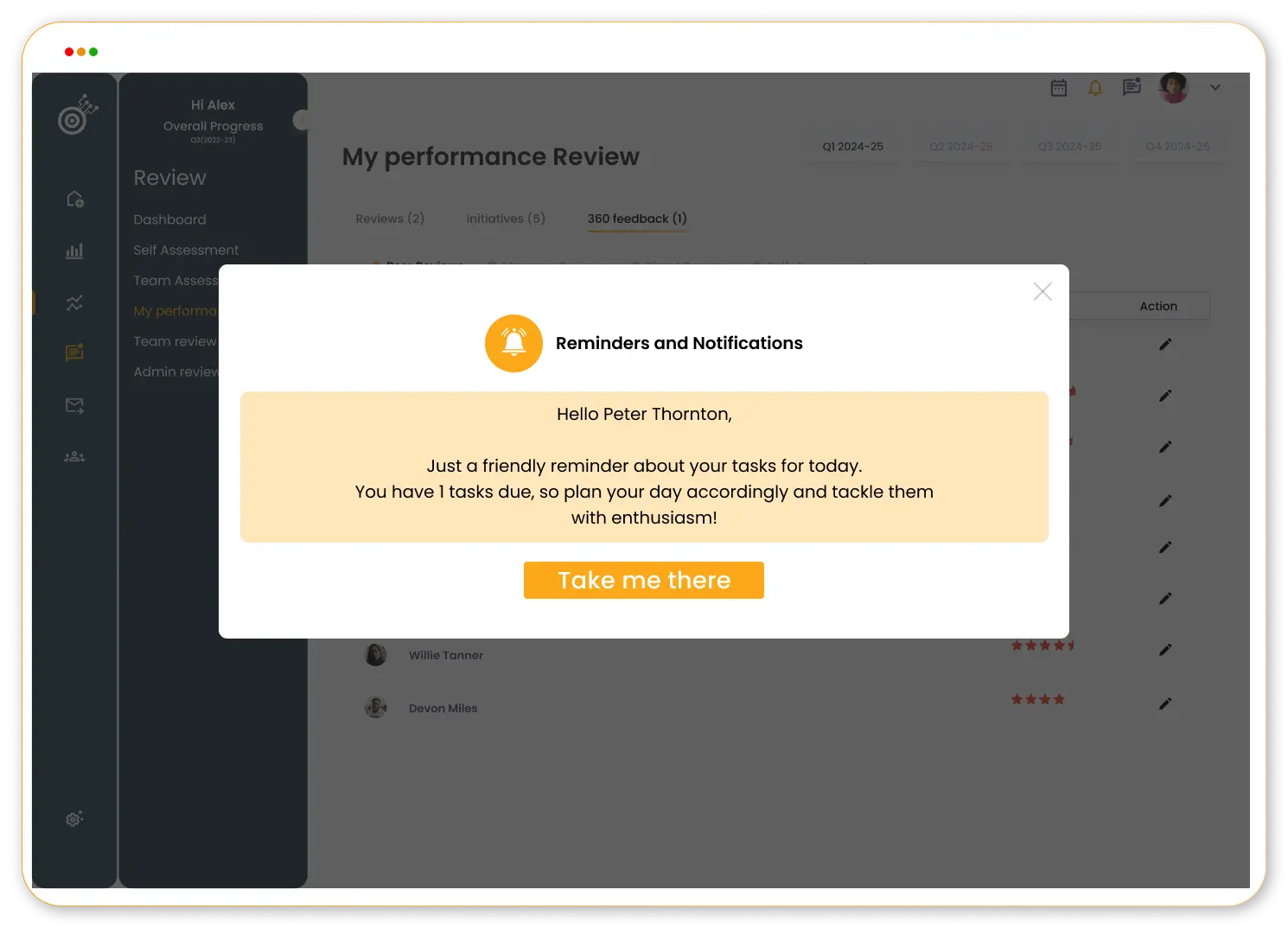
Automated reminders can significantly improve accountability around goal tracking. Nudging users to complete check-ins helps maintain focus on achieving objectives.
Key Features:
Email Reminders: Automated notifications remind users about upcoming check-ins or deadlines related to their OKRs.
Dashboard Alerts: Alerts on dashboards can prompt users when they are falling behind on key results or when deadlines are approaching.
Customizable Notification Settings: Users should be able to tailor notification preferences based on their needs.
Seamless Adoption and Onboarding
The success of any OKR tool heavily relies on how effectively it is implemented within an organization. A seamless onboarding experience ensures users understand how to maximize the tool’s capabilities from day one.
Key Features:
Comprehensive Support Resources: Documentation, video tutorials, and FAQs should be readily available for new users.
Coaching Services: Offering coaching or consulting services during onboarding helps organizations tailor the tool to their specific needs.
User Community Forums: Access to community forums allows users to share best practices and learn from each other’s experiences.
Integration Capabilities
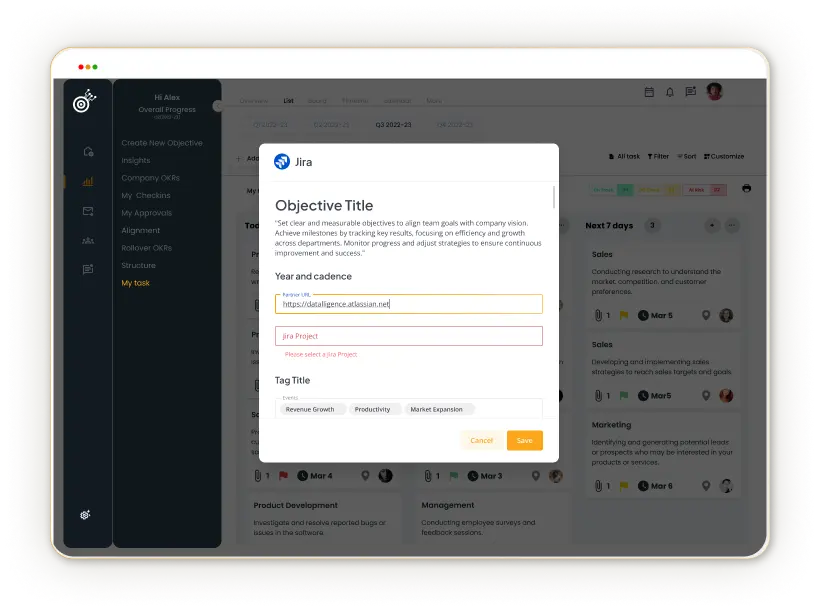
In an increasingly interconnected digital landscape, integration capabilities are vital for ensuring seamless workflows across various platforms used within an organization.
Key Features:
API Access: Open APIs allow organizations to connect their existing software solutions (like CRM or project management tools) with the OKR platform.
Third-party Integrations: Pre-built integrations with popular tools such as Slack, Microsoft Teams, or Google Workspace streamline communication around objectives.
Single Sign-On (SSO): Facilitating easy access through SSO improves user experience by reducing password fatigue while enhancing security protocols.
Goal Prioritization Frameworks

With multiple objectives vying for attention, having a systematic way to prioritize goals becomes essential for effective execution within an organization.
Key Features:
Weighted Scoring Systems: Allowing teams to assign weights based on urgency or importance helps prioritize which key results deserve immediate focus.
Dependency Mapping: Visualizing dependencies between different objectives aids teams in understanding which goals must be achieved first before others can follow.
Prioritization Workshops: Built-in frameworks or templates for conducting prioritization workshops ensure alignment among stakeholders regarding what matters most at any given time.
Customizable Goal Templates
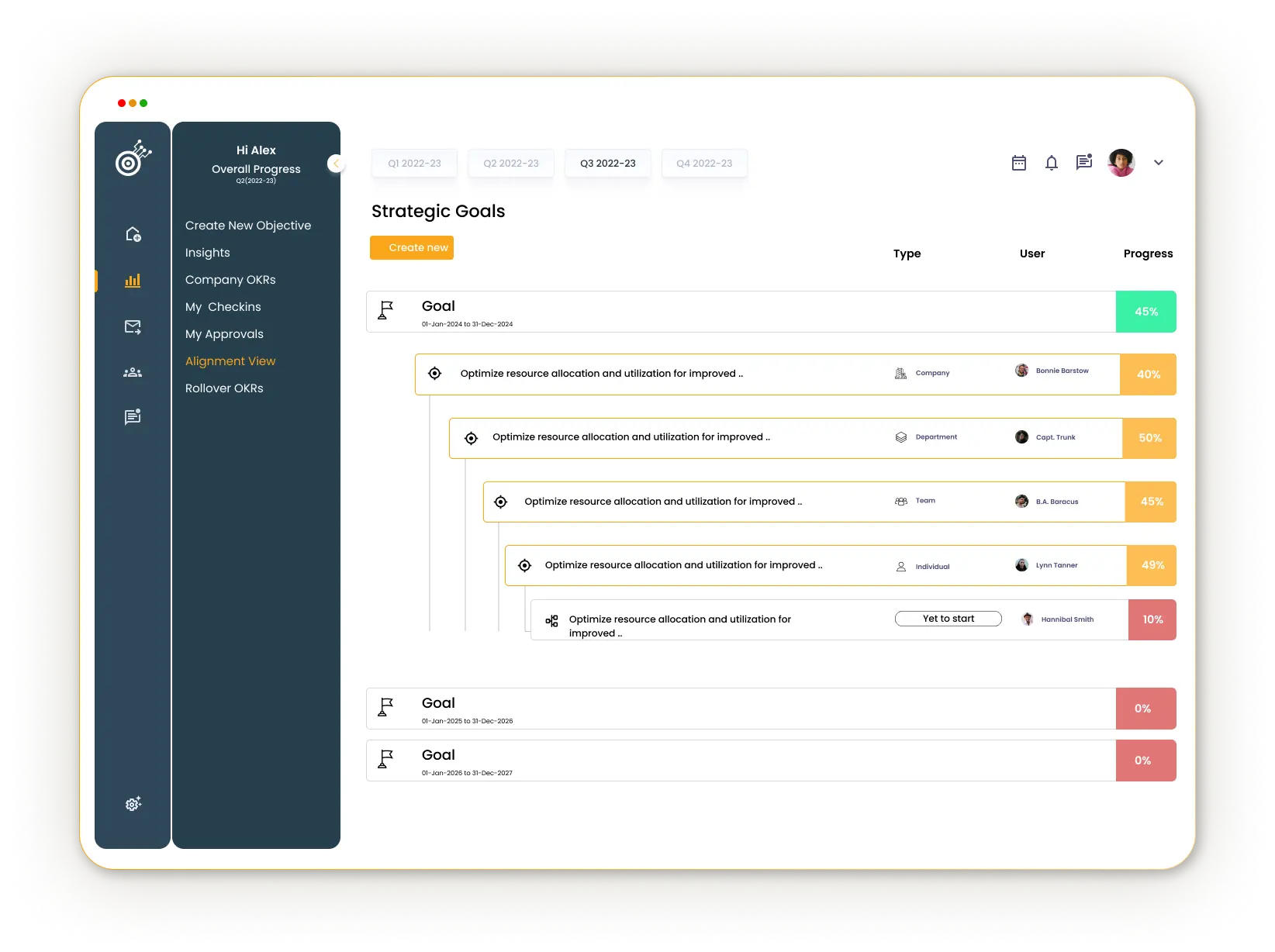
Customizable templates simplify the goal-setting process by providing predefined structures tailored to specific departments or projects within an organization.
Key Features:
Department-Specific Templates: Custom templates designed for marketing, sales, HR, etc., make it easier for teams to set relevant objectives quickly.
Best Practice Examples: Accessing examples from high-performing organizations serves as inspiration when crafting new goals while ensuring alignment with industry standards.
Version Control & History Tracking: Keeping track of changes made over time allows teams insight into how goals have evolved while promoting accountability among contributors involved in setting them up initially.
AI-Powered Recommendations
The integration of AI technologies into OKR management tools enhances decision-making processes by providing intelligent recommendations based on historical data patterns observed across an organization’s previous cycles.
Key Features:
Predictive Analytics: AI-driven insights forecast potential outcomes related to individual or team performance metrics based on past behaviors or trends observed within similar contexts.
Smart Suggestions: Tools offering context-specific suggestions during goal-setting sessions empower users with data-backed recommendations tailored towards achieving greater success rates overall.
Continuous Learning Algorithms: AI systems continuously learn from user inputs over time, refining suggestions further as they gather more data about user behaviors and preferences.
Data Security and Compliance Features
As organizations increasingly rely on digital tools to manage sensitive information related to performance goals, data security must remain a top priority.
Key Features:
Encryption Protocols: End-to-end encryption protects sensitive data both in transit and at rest, ensuring confidentiality.
User Access Controls: Role-based access controls allow organizations to limit who can view or modify specific objectives based on their job functions.
Compliance Monitoring: Features that monitor compliance with industry regulations (such as GDPR) ensure organizations maintain high standards regarding data protection practices.
Conclusion
As we approach 2025, organizations need to leverage advanced OKR management tools that not only facilitate goal-setting but also enhance employee engagement and foster a culture of continuous improvement. By adopting these fifteen essential features, businesses can ensure they’re not just tracking progress but actively driving it forward.












